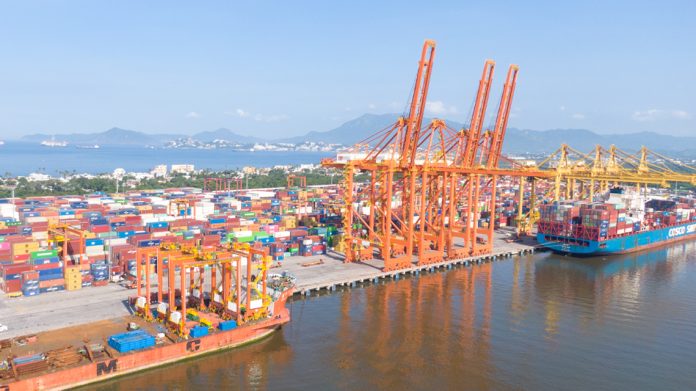
ICTSI container terminal in Mexico
US Census data shows that Mexico has surpassed China as the US’ major trading partner during the course of this year.
Consultant Jon Monroe attributes this shift in trade patterns to a contraction in orders for Chinese goods and the effects of reshoring and nearshoring processes that are now having a direct effect on supply chains and the movement of freight.
Recently released data reveals that factory orders are down for the fourth month in a row said Monroe.
He added, “Cardboard exports, used for packaging, are an indicator of factory activity. This points to the fact that factories in Asia have slowed to the point that there is less demand for packaging materials, which trickles down to a declining demand for products.”
Asian cardboard packaging exports are down between 10% and 20%, said Monroe.
Changes in trading patterns have been occurring since the trade dispute between China and the US began, under the Trump administration, in 2017.
That, explains Monroe, has seen, “A combination of weak demand by US and EU economies combined with a shift away from China for sourcing as companies take on a de-risking strategy.”
US Census data shows that in Q1 Mexico overtook China as America’s biggest trading partner. US trade with Mexico in the first four months of this year stood at 15.4% of all the goods, both imports and exports traded, with Canada trade at 15.2% and China’s share at 12.0%.
However, these figures do not spell the end of China’s trade with the US. Instead, foreign direct investment figures show a 41% increase in Mexico in the first seven months of this year, much of that investment comes from Chinese manufacturing, which is moving its operations to supply US markets.
That has made China, Mexico’s second largest trading partner after the US according to Monroe.
Meanwhile, Mexico’s Institute of National Statistics reported that its trade deficit has contracted substantially over the past year, declining from US$6.27bn to just US$880m, up to the end of July 2023. Economists had expected the deficit to settle at around US$1.67bn.
Data shows that Mexican exports increased to US$47.55bn, up 2.9% year-on-year mainly driven by non-oil products which were up 5.7%.
Within those figures it is notable that manufactured automotive products increased 35.7%, offsetting declines in mining of 25.9% and agricultural goods at -6%.
Trade in oil slumped -28.5% to US$2.7bn while non-oil exports to the US alone increased 6.9%.
Meanwhile, imports fell 7.7% to US$48.43bn, as oil purchases tumbled 50.8% and non-oil imports rose by only 0.3%. There was also a notable increase in capital goods of 23.3%, but a decrease in what the institute calls “intermediate goods” of -10.4% and consumer goods down -9.1%.
With a weakening consumer market and rising debt the outlook for the US economy, which relies on consumer spending for a large part of its GDP, appears to be bleak.
“The Fed [Federal Reserve] just released new evidence that consumers will run out of COVID induced savings in the third quarter. This means savings will return to pre-COVID levels. Given that the US depends on consumer spending for two thirds of its GDP, we could be in for a long slump in demand,” concluded Monroe.
Mary Ann Evans
Correspondent at Large
 Hotline: 0944 284 082
Hotline: 0944 284 082
 Email: manager@vykhang.com.vn
Email: manager@vykhang.com.vn



 VN
VN